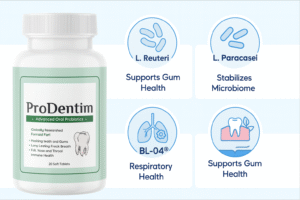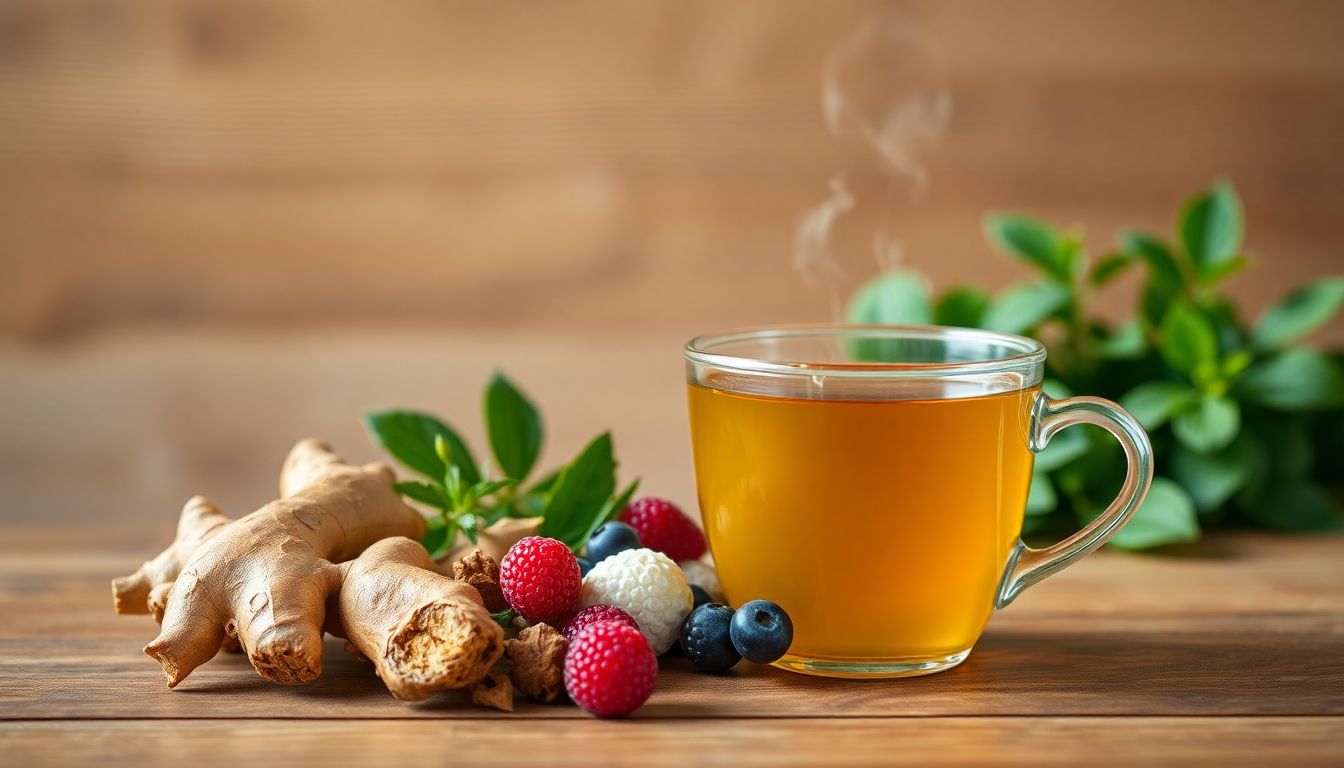Do you feel that constant tightness in your chest? That nagging urge to clear your throat?
For many, these aren’t just occasional annoyances—they’re daily reminders that their lungs are under fire. The hidden culprit often isn’t infection or pollution alone… it’s chronic inflammation.
When your airways are inflamed, they swell up like a sprained ankle, narrowing the passageways and trapping mucus. This creates the perfect storm for wheezing, coughing, and that frustrating “can’t take a deep breath” feeling.
But what if you could calm this inflammation simply by choosing the right foods?
Emerging research reveals that certain foods act like natural fire extinguishers for your respiratory system. A 2024 review in the European Respiratory Journal found that dietary interventions could reduce inflammatory markers in the lungs by up to 35% in just weeks.
Here are the top 5 anti-inflammatory foods that are your lungs’ best friends for life.
1. Ginger: The Ancient Lung Tonic
Why It Works: Ginger contains powerful compounds like gingerols and shogaols that work similarly to some anti-inflammatory medications—but without the side effects. It’s a natural bronchodilator, meaning it helps relax the constricted airway muscles that make breathing difficult.
The Science: A study published in the American Journal of Respiratory Cell and Molecular Biology found that ginger components significantly reduced airway inflammation and inhibited mucus-overproduction.
How to Use It:
- Grate fresh ginger into hot water for a soothing tea
- Add to stir-fries, smoothies, or salad dressings
- Pro Tip: Combine ginger with our 7-Second Morning Habit for a powerful daily lung-clearing routine.
2. Turmeric: The Golden Healer
Why It Works: The active compound in turmeric, curcumin, is one of nature’s most potent anti-inflammatories. It specifically targets NF-kB, a molecule that travels into your lung cell nuclei and turns on genes related to inflammation.
The Science: Research in Advances in Experimental Medicine and Biology showed that curcumin can effectively mitigate lung inflammation caused by everything from pollution to chronic conditions like COPD.
How to Use It:
- Always combine with black pepper (piperine) to boost absorption by 2,000%
- Add to curries, soups, or golden milk lattes
- Look for supplements with enhanced bioavailability for therapeutic doses
3. Wild-Caught Salmon: The Omega-3 Powerhouse
Why It Works: Salmon is rich in EPA and DHA, the two most bioavailable omega-3 fatty acids. These directly combat inflammation by producing compounds called resolvins that actively “resolve” inflammatory processes in the body.
The Science: A study in the American Journal of Epidemiology found that higher omega-3 intake was associated with better lung function and slower decline in respiratory health over time.
How to Use It:
- Aim for 2-3 servings per week of wild-caught salmon, mackerel, or sardines
- If you don’t eat fish, consider algae-based omega-3 supplements
- Important: Balance your omega-3 intake by reducing omega-6 oils (soybean, corn, sunflower) which are pro-inflammatory
4. Berries: The Antioxidant Army
Why They Work: Berries—especially dark ones like blueberries, blackberries, and raspberries—are packed with anthocyanins. These flavonoids give berries their vibrant color and directly combat oxidative stress in lung tissue, a key driver of inflammation.
The Science: Research from the Harvard School of Public Health found that adults who ate the most blueberries and strawberries had the slowest rate of lung function decline—equivalent to delaying aging in the lungs by 2-3 years.
How to Use Them:
- Add a cup of mixed berries to your daily diet
- Keep frozen berries on hand for smoothies year-round
- Choose organic when possible to avoid pesticide exposure
5. Green Tea: The Lung Protector
Why It Works: Green tea is rich in EGCG (epigallocatechin gallate), a powerful antioxidant that protects lung cells from damage while reducing inflammation in the airways. It also contains theanine, which can help relax the breathing muscles.
The Science: A Japanese study following over 1,000 participants found that those who drank at least two cups of green tea daily had significantly better lung function measurements than non-tea drinkers.
How to Use It:
- Steep for 3-5 minutes to maximize EGCG extraction
- Drink 2-3 cups throughout the day
- Avoid adding milk, as it can bind to and neutralize the beneficial compounds
The 3 Foods That Are Setting Your Lungs on Fire
While adding these anti-inflammatory foods is crucial, it’s equally important to reduce the biggest inflammatory triggers:
- Processed Sugars: Spike blood sugar and trigger inflammatory cascades
- Industrial Seed Oils: (Soybean, corn, canola) are excessively high in pro-inflammatory omega-6
- Dairy Products: Can thicken mucus and worsen congestion for many people
Your 3-Day Lung-Friendly Meal Plan Starter
Breakfast: Ginger-turmeric smoothie with berries and green tea
Lunch: Large salad with grilled salmon and olive oil dressing
Dinner: Stir-fry with plenty of vegetables and ginger-turmeric sauce
For a complete eating plan, see our detailed 7 Day Lung Detox Diet.
The Bottom Line: Your Fork is Your First Medicine
Food isn’t just fuel—it’s information that tells your body whether to ramp up inflammation or calm it down. By making these five foods regular guests at your table, you’re giving your lungs the fighting chance they deserve.
Remember: Consistency beats perfection. Start by adding one of these lung-loving foods to your diet today, and build from there. Your breath will thank you.
Anti-Inflammatory Foods for Lungs: Your Questions Answered
1. How quickly will I notice improvements in my breathing?
Many people feel reduced congestion and easier breathing within 1-2 weeks of consistently adding these foods. Maximum anti-inflammatory benefits typically build over 4-6 weeks as your body’s inflammation markers decrease.
2. Can these foods replace my inhaler or medication?
No, always follow your doctor’s prescribed treatment plan. These foods work as powerful complementary support to reduce underlying inflammation. Some people may eventually need less medication under medical supervision, but never stop or reduce prescriptions without consulting your healthcare provider.
3. I don’t like fish – are there vegetarian alternatives for omega-3s?
Yes! Flaxseeds, chia seeds, walnuts, and hemp seeds are good sources of ALA (alpha-linolenic acid), which your body can convert to EPA and DHA. For more concentrated doses, consider algae-based omega-3 supplements which provide the same EPA and DHA as fish oil.
4. Should I use fresh or powdered turmeric and ginger?
Fresh is generally more potent as it contains the full spectrum of active compounds. However, high-quality powders are still effective and more convenient. The key is consistency—use whichever form you’ll actually incorporate into your diet daily.
5. Can I take supplements instead of eating these foods?
Supplements can be helpful for therapeutic doses, but whole foods provide synergistic benefits that isolated compounds can’t match. The fiber, additional phytonutrients, and natural combinations in whole foods create a more comprehensive anti-inflammatory effect. Think of supplements as an addition to, not a replacement for, a healthy diet.
6. Are organic versions necessary for maximum benefit?
While organic can reduce pesticide exposure, don’t let perfect be the enemy of good. Conventionally grown berries and vegetables are still far better than not eating them at all. If budget is limited, prioritize organic for the “Dirty Dozen” like strawberries and spinach.
7. How do these foods compare to prescription anti-inflammatories?
Food works more gently and systemically, addressing the root causes of inflammation rather than just suppressing symptoms. While pharmaceutical anti-inflammatories may work faster for acute issues, dietary changes provide sustainable, side-effect-free support that can reduce your need for stronger interventions over time.
8. Will cooking destroy the beneficial compounds?
It depends on the food. Light steaming preserves most nutrients in vegetables. Interestingly, cooking tomatoes actually increases lycopene availability, and heating turmeric with fat and black pepper enhances curcumin absorption. For berries and greens, raw is usually best.
9. Can these foods help with smoking-related lung damage?
Absolutely. While the most important step is to quit smoking, these anti-inflammatory foods can help repair existing damage by reducing oxidative stress and inflammation. They’re particularly beneficial during and after the quitting process.
10. I have food allergies – which alternatives work similarly?
For ginger/turmeric allergies: Try rosemary, oregano, or cloves which have different but potent anti-inflammatory compounds.
For fish allergies: The seed sources mentioned in #3 work well.
For berry allergies: Pomegranates, cherries, and red grapes offer similar antioxidant benefits.
Always work with your allergist to find safe alternatives.
🌿 Additional Support: Boost Your Results
Combine your anti-inflammatory diet with proven supplements. Explore our evidence-based guide to the Best Lung Health Supplements in 2025 .
Discover which supplements work synergistically with these foods for maximum lung support.

Click on Image above to Learn More











